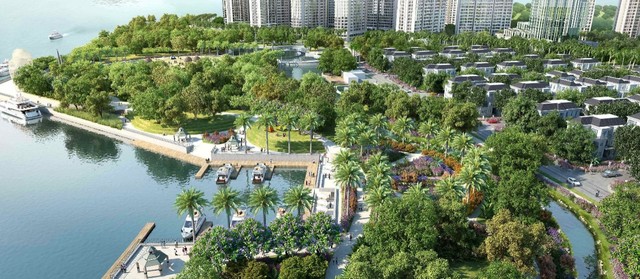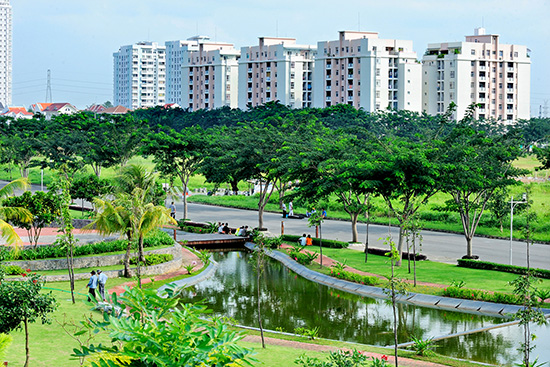In the strategy and plan of Ho Chi Minh City for green growth, the energy efficiency target for the period 2016 - 2018 is set at 4.5% reduction in energy intensity by 2018, corresponding to an annual reduction of energy intensity by 1.5%.
Reduction of the multidisciplinary energy intensity
Specifically, in 2016, the energy intensity is reduced to 103.3 for industry; 38.4 for commercial services; 1033.3 for transportation, 9.7 for hospital; 15.4 for schools and 1072.1 for other sectors (households, buildings).
The target ratio of renewable energy capacity toward 2018 is 1.00%. In which, the consumption capacity of newly installed facilities is set at 10W, expected to reach the growth target of 0.21%.

Accordingly, the total electrical energy savings by 2017 is 18,768 TOE, relying on the energy efficiency activities (EE) of each sector. Taking it for an example, with industry, trade services and water supply and sanitation, the savingscould be facilitated through the energy audit, and consulting in energy management systems; support the development of energy consumption norms; preparation of investment solutions and supporting the implementation of energy efficiency solutions; setting up the model of green energy (green corporation, green business parks).
In the area of transportation, it is to support the implementation of technological innovation, to set up the energy consumption norms; to make programs for conversion into the use of LPG/CNG fuel with a target for 5-20% of buses and taxis; to coordinate the implementation of programs to encourage people to use public transport.
For hospitals and schools, it is to conduct construction survey on energy consumption and to identify the energy efficiency solutions; to build green energy model (green hospital, green schools). For households, buildings and offices, it is about communication and training on energy efficiency for households and offices; in coordination with Ho Chi Minh city EVN to realize the community emulation “power saving family”; and training in green architecture. The public lighting system and that of private properties will also be renovated. All these activities will be monitored to track the performances.
To increase the proportion of renewable energy, Ho Chi Minh City electricity sector will deploy various solar types with subsidy programs for solar poweruse;it also supports the investment into solar power system installed for office buildings. In addition, the city will also have programs to support the market for solar energized water heaters, biogas energy (biogas), wind energy, power generation from waste disposal. In 2016, the total output is expected to reach 9.7 MW, and 49.1 MW for the period 2016 - 2018.
Green growth tightly connected to clean energy development
Accordingly, the Ho Chi Minh City Energy Conservation Center makes some recommendations that it is necessary to set specific targets for energy efficiency perspective to be able to respond to green growth indicators; it needs a database system to perform a comprehensive review of the field of energy use in a locality / province from which it is possible to propose the long-term targets.

In addition, there should be also the necessary supports in terms of budgeted plans, the policies of local authorities in the shaping of programs and strategies for implementation of energy efficiency, renewable energy applications across the local area. For example, in Ho Chi MinhCity, all the corporations, business groups, large cooperatives, the infrastructure management units should have commitments with the Municipal People’s Committee to implement the energy savings to achieve energy saving targets. On the other hand, it is also necessary to formulate the mechanisms of Monitoring – Reporting - Valuation (MRV) to be able to make assessment on the outputs.
The objectives of the Ho Chi Minh City authority from now to 2020 are to maintain the sustainable economic growth, gradually to realize the green growth, to develop the clean energy and renewable energy. In particular, it is special to raise the proportion of new energy, renewable energy and energy generation from waste disposal to meet the staged needs of socio-economic development.
It is also planned for the construction of a power generating Plant to collect gas from the city's landfills under the Clean Development Mechanism (CDM) to make use of the greenhouse gases for generating the clean electricity. The achievable power loss rate by 2020 is about 5%; while it is to restructure the energy use by increasing the proportion of renewable energy, new energy up 1.74% on the total power consumption of the entire city.
Trong Tan
